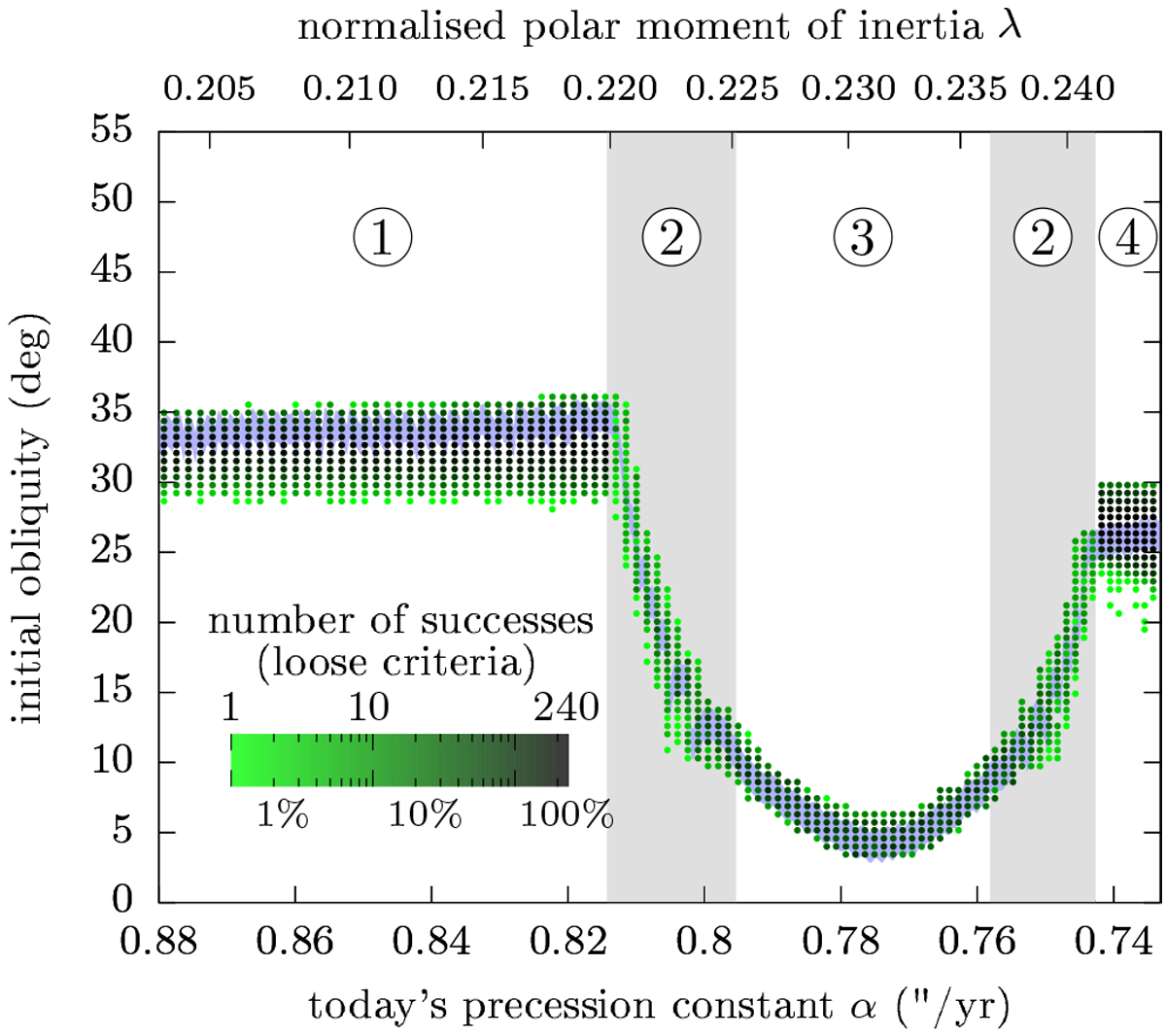Fig. 12

Brute-force search for Saturn’s past obliquity using the loose success criteria: probing all dynamical pathways. We use Titan’s nominal migration law (b = b0). Among all trajectories evenly sampled in the space of the normalised polar moment of inertia λ (top horizontal axis, 101 values), of the initial obliquity (vertical axis, 101 values), and of the initial precession angle (240 values between 0 and 2π), we only keep those matching Saturn’s spin axis today according to our loose success criteria (see text). Each point is coloured according to the number of successful runs among the 240 initial precession angles; the success ratio is written below the colour bar. A point is not drawn if no successful trajectory is found. In the back, the blue interval shows the past obliquity of Saturn obtained by backward numerical integration (same as Fig. 7 for b = b0), showing theconsistency between backward and forward integrations in time. The background stripes and their labels have the same meaning as in Fig. 5.
Current usage metrics show cumulative count of Article Views (full-text article views including HTML views, PDF and ePub downloads, according to the available data) and Abstracts Views on Vision4Press platform.
Data correspond to usage on the plateform after 2015. The current usage metrics is available 48-96 hours after online publication and is updated daily on week days.
Initial download of the metrics may take a while.


